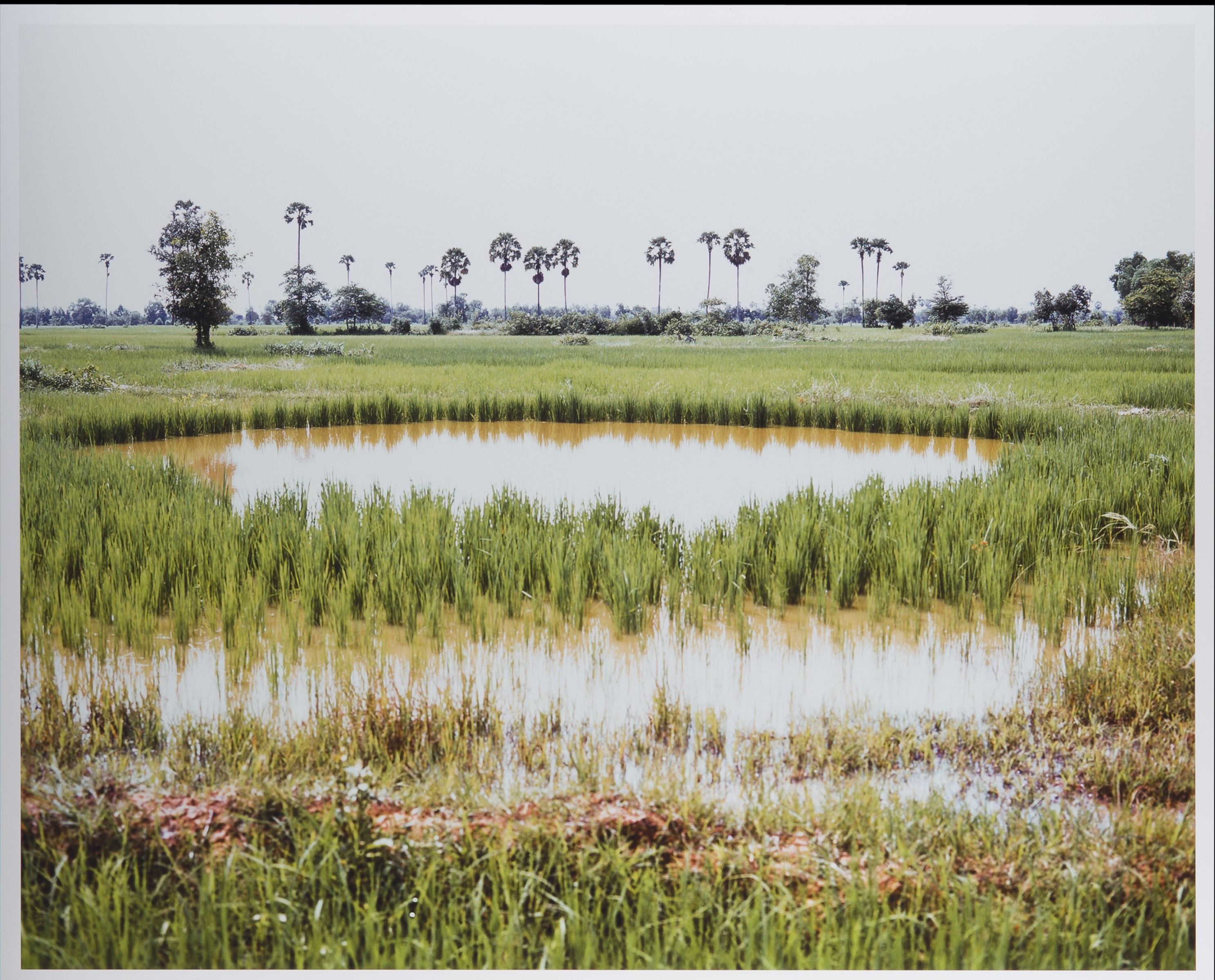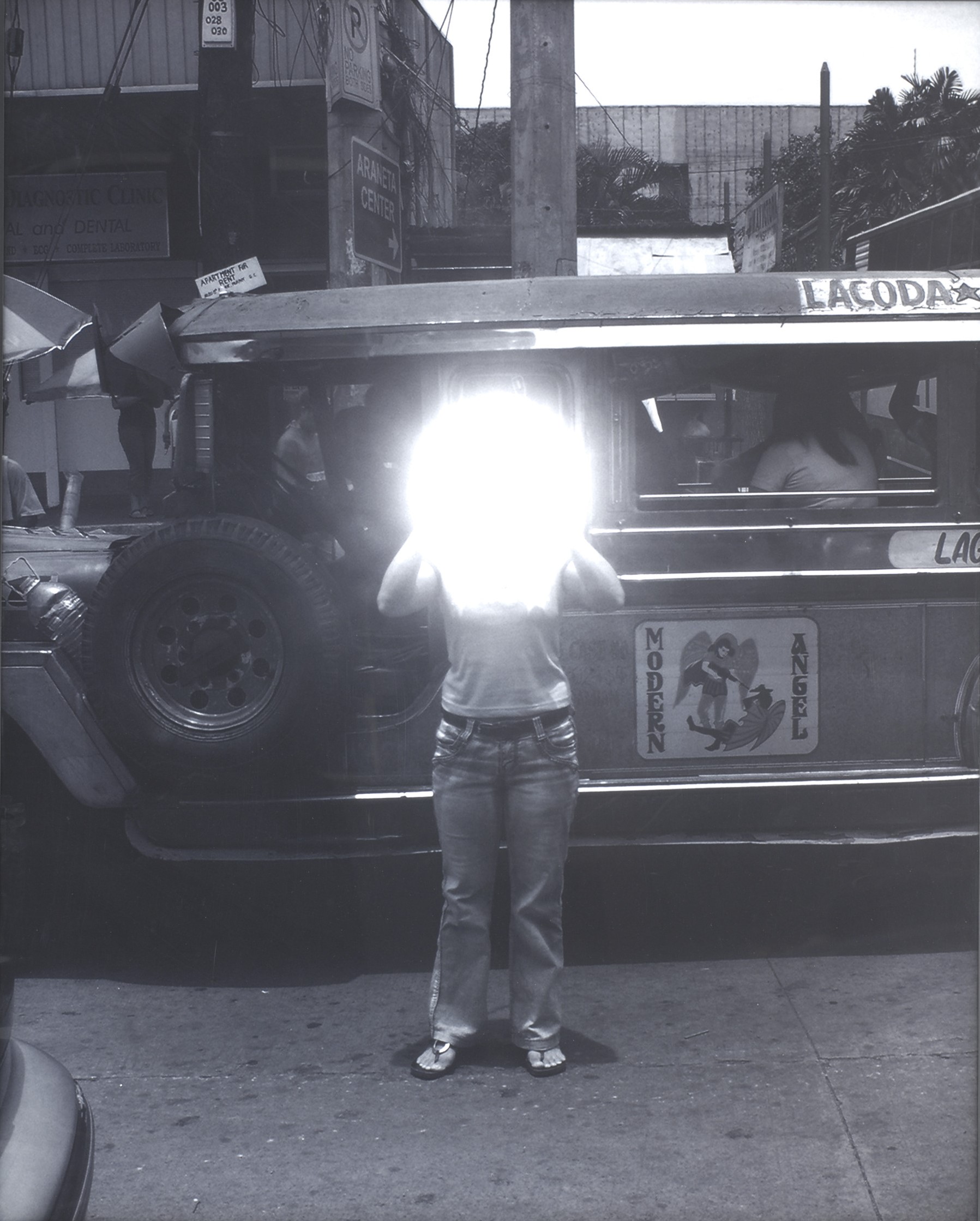Excerpt from “A Slow Descent: Through the Photographic Surfaces of Wei Leng Tay, Vandy Rattana and Poklong Anading” in Living Pictures (2022) edited by Charmaine Toh. Available for access in its entirety, on Project Muse and JSTOR.
IV. A Slow Descent: Through the Photographic Surfaces of Wei Leng Tay, Vandy Rattana and Poklong Anading
- Kenneth Tay, Assistant Curator at Singapore Art Museum
In 1972, two photographs gained wide international circulation as they represented, seemingly, two different aspects of our globalised world. The first, included in this exhibition, is a photograph of the Second Indochina War (now commonly known as the Vietnam War), taken by Nick Ut (b. 1951) and entitled The Terror of War (see Nick Ut. The Terror of War, 1972. Gelatin silver print on paper, 40.9 × 51 cm. AP Photo/Nick Ut. DOGMA Battlefield Lens Collection.). This photograph, known informally as “Napalm Girl,” famously depicted the young Phan Thi Kim Phuc crying and running away from the napalm attacks administered by the US military. Whether Ut’s photograph changed public opinion on the war remains debatable, but it was seen as a powerful example of photojournalism on the ground. The second was a photograph taken out of this world, literally, by the crew onboard the Apollo 17 as they headed towards the moon. For the first time, The Blue Marble showed the earth as a whole object through the means of photography. As it circulated around the world, The Blue Marble also became an evocative symbol through which many understood the need for global harmony. Taken at such an extreme height, some 29,000 km away from the surface of the earth, the zealous borders through which we understand our political sovereignties, in all their pettiness, seem to disappear. All we are left with is the image of a fragile blue marble in need of global stewardship. In many ways, the symbolisms attached to The Blue Marble is understandable, given that it was published only months after “Napalm Girl” became the anguished face of globalisation. The Second Indochina War was, after all, part of an American-led geopolitical order, with the spectre of communism seen as a global threat, as well as the need to secure Vietnam’s precious oil resources to fuel the global economy.1 From the terror on the ground to the serene beauty as seen from above, these two photographs offered contrasting perspectives of our global flows. Two different ways, it seems, of picturing the world.
In his reflections on the technological conditions of modernity, the philosopher Martin Heidegger argued that we seem to live in an age of the “world picture.” By this, he was referring not only to the conditions in which seeing has become the primary means of sensing and knowing the world, but also how the environment around us is “conceived and grasped as a picture,” seemingly reducible to a surface.2 This reduction of the world into a surface is also what characterises photography; but as media theorist Vilém Flusser argued, photographic surfaces belong to an abstraction of the third order: “They are abstractions from [scientific] texts which abstract from traditional images which themselves abstract from the concrete world.”3 Whether or not we subscribe to Flusser’s ontology, the photographic surface can hardly be said to be an immediate document of the world before us. Thus, when the critic Susan Sontag wrote in the 1970s that photographs “make up, and thicken, the environment,” she was already observing how it was “reality which is scrutinized, and evaluated, for its fidelity to photographs.”4 Sontag was not mourning the loss of a reality as it really was, but rather arguing that reality was always already a semiotic construction and, in her observations, heavily mediated by photography.
Today, with fake news and deep fakes thickening up our environment, the long-held assumptions of photography’s veracity to the real are only holding up due to “a nostalgia for a bygone era of clear and simple relations between photography, human observers, and ‘the real world’ that never existed.”5 What Sontag sought, writing in a Cold War period saturated with propaganda media, which attempted to polarise the world into two political blocs, was not an exit from the world picture, but an ethics of looking. She argued that “the highest vocation for photography was to explain man to man.”6 Sontag’s use of the superlative here is significant, for it is also a plea to bring the photographing observer down from his seemingly disembodied vision (from on high, or out in space), and back towards the ground—towards the body, and to be accountable to the other bodies around us.7
In this essay, I discuss the works of artists Wei Leng Tay (b. 1978), Vandy Rattana (b. 1980) and Poklong Anading (b. 1975), reading them through the topography of their photographic surfaces. Tay’s between leaving and arriving (see Wei Leng Tay. between leaving and arriving, 2019. 88 laserjet prints on paper, 327 × 336 cm. Collection of Singapore Art Museum. Installation view of studio of Wei Leng Tay, Artist-in-Residence, Residencies OPEN × Art After Dark, NTU Centre for Contemporary Art Singapore, 20 September 2019.) translates an aerial photograph, taken by her emigrating parents in the 1970s, onto a grid of A3 paper printouts. I examine this work alongside the artist’s longstanding interest in displacement and migration, but also against the overview effect that mediates most aerial imagery and representations of globalisation as a flattening force. With his series The Bomb Ponds


ONCE MORE, FROM THE TOP: BETWEEN LEAVING AND ARRIVING
To make her work between leaving and arriving, Tay photographed, enlarged and distributed a photographic slide, found in her family archives, across a grid of 88 A3 paper printouts. The image in question is an aerial photograph taken by the artist’s parents, sometime in the early 1970s, on one of their frequent travels between Malaysia, Singapore and Australia in search of work and better life opportunities. Row after row of freshly-built public housing blocks seem to indicate the early phase of urban development and nation-building in Southeast Asia. Yet, the exact location of this aerial photograph remains unspecified, even as audiences are encouraged by the photograph’s enlargement to speculate. When approaching the work however, audiences might find that the breeze generated from their own movement animates the work, as the printouts are only secured at their top corners and flap with the air currents. And when they do, what had initially seemed like a smooth and seamless image quickly reveals its “gaps” and “fault lines” up close. A major and recurrent topic in Tay’s practice is displacement as a result of movement and migration. Her ongoing series Abridge (2018–), for instance, looks at the history and politics of migrations across the Pearl River Delta region, set against the recent completion of the Hong Kong-Zhuhai-Macau Bridge.8 While others may have identified her as a “diasporic photographer” dealing with the movements and migrations of the Chinese diaspora, she does not so much focus on ethnic identity as on the broader emotional and psychic unease related to ideas of agency, home and belonging.9 As she puts it:
“My work in Southeast Asia focuses on areas
that are relatively young, with some postcolonial
countries that have had to rely on nation
building to bind disparate ethnic groups, and
in my opinion the forces of a more recent
history of nation building supersede the influence
of the original homeland.”10
Endnotes
-
On this, see Louis Wesseling, Fuelling the War: Revealing an Oil Company’s Role in Vietnam (Collingdale: Diane Publishing Co., 2000) and Barry Weisberg, “Southeast Asian Resources: The Oil Beneath Indochina,” The Harvard Crimson, 17 March 1971. ↩︎
-
Martin Heidegger, “The Age of the World Picture” in The Question Concerning Technology and Other Essays, trans. William Lovitt (New York: Harper & Row, 1977), 129–30. ↩︎
-
Vilém Flusser, Towards a Philosophy of Photography, trans. Anthony Matthews (London: Reaktion Books, 2000), 14. ↩︎
-
Susan Sontag, On Photography (New York: Penguin, 1977), 3, 87. It is interesting to note too that Sontag’s collected essays on photography were published the same year as Heidegger’s translated essays, and just a few years after the two iconic photographs mentioned earlier. ↩︎
-
Katharina Fackler, “Of Stereoscopes and Instagram: Materiality, Affect and the Senses from Analogue to Digital Photography,” Open Cultural Studies 3 (2019): 520. Emphasis added. ↩︎
-
Sontag, op. cit., 111. Emphasis added. ↩︎
-
This is of course in reference to the construction of the observer as detailed in the work of Jonathan Crary. See Jonathan Crary, Techniques of the Observer: On Vision and Modernity in the Nineteenth Century (Cambridge: MIT Press, 1992). ↩︎
-
For more on this series, see Olivier Krischer, “Surface Tension: Hong Kong Photographs in Wei Leng Tay’s Abridge Project,” Trans Asia Photography 10, no. 2 (2020). ↩︎
-
Wei Leng Tay, quoted in Anthony W. Lee, “Photography and Disapora: A Roundtable with Pok Chi Lau, Surendra Lawoti, and Wei Leng Tay,” Trans Asia Photography 5, no. 1 (2014). ↩︎
-
Ibid ↩︎
Bibliography
- pl. 226
- Nick Ut. The Terror of War, 1972. Gelatin silver print on paper, 40.9 × 51 cm. AP Photo/Nick Ut. DOGMA Battlefield Lens Collection.
- pl. 299
- Wei Leng Tay. between leaving and arriving, 2019. 88 laserjet prints on paper, 327 × 336 cm. Collection of Singapore Art Museum. Installation view of studio of Wei Leng Tay, Artist-in-Residence, Residencies OPEN × Art After Dark, NTU Centre for Contemporary Art Singapore, 20 September 2019.